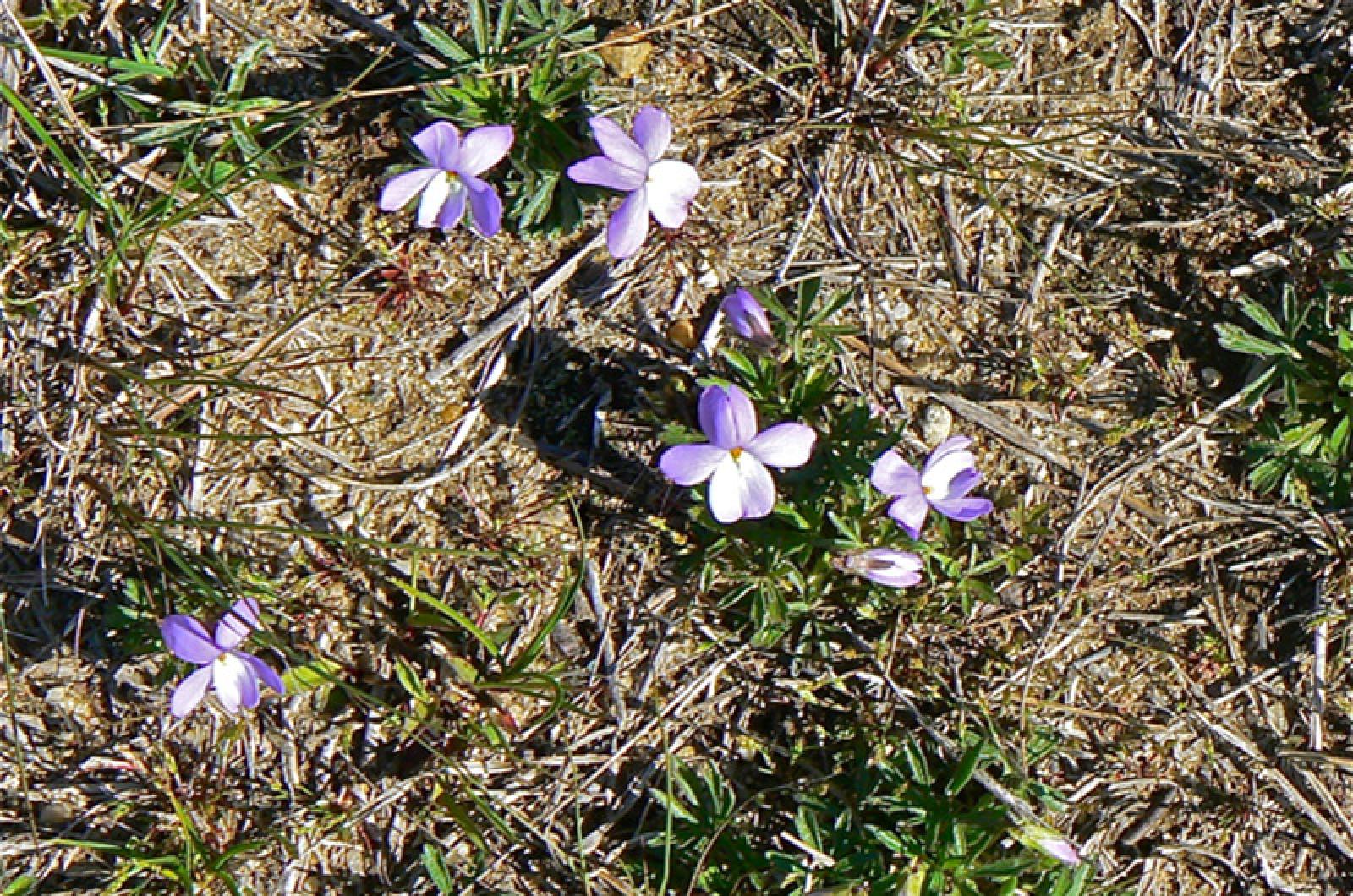Conspicuous describes this plant only when it is in flower, as its leaves are at most two inches off the ground. The leaf is round in outline and maybe one to one and a half inches across, and is more horizontal than vertical. But the leaf is mostly air as it has three to five narrow lobes with a lot of air in between them. The leaf resembles a bird’s foot, hence the plant’s name — bird’s foot violet.
The only aspect of this plant that makes it conspicuous is its flower. This spring wildflower grows in clusters and its pale bluish-purple flowers tower up to four inches above the ground, and are more than three-fourths of an inch across. They have the typical violet flower, with the two upper petals smaller than the lower ones. The bright orange anthers in the middle of the flowers add a contrasting dash of color. It can also be conspicuous because we are all eager to see bright colors after a long winter, and it is one of the first plant to bloom.
Many of us may think that violets grow in moist soils, often near streams. Not this one, which prefers dry well drained soils and full sun. It does well in our sandy soils providing there is plenty of bare ground. In other words, a plant this small cannot compete well against either larger plants or plants whose roots and stems completely cover the ground. So the bird’s foot violet does well in our native grasslands and heathlands, where the grasses are bunch grasses leaving lots of bare ground between clumps rather than the turf grasses we have in our lawns. Bird’s foot violets are especially prevalent along the fire lanes in the Manuel Correllus State Forest.
Flowers of many violets are self-fertilizing and are often fertilized before the flowers open. But the bird’s foot violet depends on various species of bees and butterflies to pollinate its flowers before it can produce seeds. The pollinators transfer the pollen between plants as they move from flower to flower collecting nectar.
Bird’s foot violet seedpods explode when they are mature, spreading the seeds a few inches from the plant. This seed distribution explains why the plants grow in clumps. Some claim that the seeds can be launched as far as five meters from the parent plant! Ants are a secondary source of seed dispersal. The ants will consume the lipids and proteins attached to the seeds before discarding the seed itself.
Some animals eat these plants. The plants are so small — the leaves so small and thin — that small animals like rabbits and birds must pretty much utilize them for snacks. Before the regal fritillary butterfly became extinct in Massachusetts and the rest of New England (since the 1980s), it would lay its eggs on this violet and the caterpillars would eat the leaves.
Unlike the fritillary, the bird’s foot violet is still widespread. Look for this small but showy wildflower if you are out and about in our fields or along the fire lanes of the State Forest. Two other small plants you will see in bloom will be the yellow-flowered dwarf cinquefoil and the white to light-blue bluet.
Robert Culbert leads Saturday morning guided birding tours and is an ecological consultant living in Vineyard Haven




Comments
Comment policy »